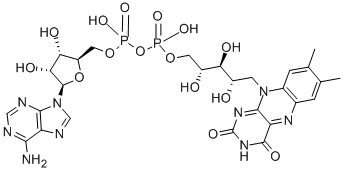What is the primary function of NAD and FAD?
Apr 28,2024
NAD and FAD are coenzymes, non-protein molecules that assist enzymes in catalyzing various biochemical reactions.
They originate from vitamins NAD from niacin (vitamin B3) and FAD from riboflavin (vitamin B2).
These coenzymes are essential for several metabolic pathways, especially energy production.
NAD and FAD act as electron carriers by accepting and donating electrons during metabolic reactions.
They undergo a cycle of reduction and oxidation: NAD is reduced to NADH, and FAD is reduced to FADH2 when they gain electrons. Conversely, they are oxidized to their original form when they lose electrons.
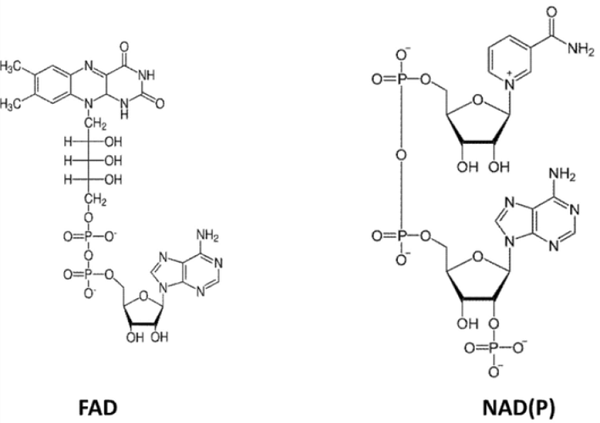
FAD
Flavin mononucleotide (FMN) and flavin adenine dinucleotide (FAD), the biologically active forms of riboflavin (vitamin B2), play a lead role in a diverse array of biological processes, which is a reflection of their structural and chemical versatility. Flavoenzymes, which contain FMN and/or FAD as prosthetic groups, catalyze many of the one- and two-electron oxidation/reduction reactions critical to the four major energy metabolism systems (photosynthesis, aerobic respiration, denitrification, and sulfur respiration). Many flavoenzymes are capable of catalyzing oxygenation reactions, such as Baeyer-Villiger oxidations and aromatic hydroxylations, which are crucial for soil detoxification processes[1].
FAD is an essential coenzyme for 5,10-methylene tetrahydrofolate reductase, a vital enzyme of the folate activation pathway, catalyzing the interconversion of 5,10-methylene tetrahydrofolate and 5-methyltetrahydrofolate. FAD is a redox cofactor of several essential reactions in metabolism. This cofactor exists in two redox states, with FAD and FADH2 oxidized and reduced forms, respectively. FAD is formed of a riboflavin moiety (vitamin B2) coupled to a phosphate group of an ADP molecule. The reaction starts with the conversion of riboflavin into flavin mononucleotide catalyzed by riboflavin kinase. Flavin mononucleotide is subsequently transformed into FAD by adding an AMP moiety from ATP catalyzed by FAD-synthase.
NAD
Since the discovery of nicotinamide adenine dinucleotide (NAD), researchers have progressively learned more about its roles in cellular function. NAD+ has emerged as a critical modulator of cell signaling and survival pathways. Cellular NAD exists in two forms: oxidized (NAD+) and reduced (NADH). NAD+ and another essential intracellular coenzyme, flavin adenine dinucleotide (FAD+), play essential roles in cellular oxidation-reduction (redox) reactions. They are responsible for accepting high-energy electrons and carrying them to the electron transport chain (ETC) to synthesize adenosine triphosphate (ATP). Regulation and maintaining a proper balance of the NAD+/NADH and FADH2/FAD ratio is critical for normal cell function and viability. NAD+ acts as a cofactor for enzymes involved in cellular energy metabolism and various metabolic pathways such as glycolysis, fatty acid oxidation, and the citric acid cycle. Both NAD+ and NADH play essential roles as coenzymes in redox reactions, and an imbalance in their ratio can impair flux through these pathways' reactions, resulting in dysregulated cellular metabolism[2].
References
[1] Steven Mansoorabadi, Hung-wen Liu, Christopher J. Thibodeaux. “The Diverse Roles of Flavin Coenzymes — Nature′s Most Versatile Thespians.” ChemInform 38 48 (2007).
[2] Sara Amjad . “Role of NAD+ in regulating cellular and metabolic signaling pathways.” Molecular Metabolism 49 (2021): Article 101195.
- Related articles
- Related Qustion
Natamycin is a polyene macrolide antifungal agent, a naturally occurring antimicrobial peptide, produced by Streptomyces natalensis strains, which is effective in inhibiting yeasts, filamentous fungal pathogens, moulds and various mycotoxin....
Apr 28,2024DrugsNisin is a food preservative with a good food safety profile.....
Apr 28,2024Biochemical EngineeringFlavin adenine dinucleotide
146-14-5You may like
- How to prevent high Cholesterol levels in daily life?
May 11, 2024
- The brief introduction of NADPH
Apr 29, 2024
- Nisin: Application, Mechanism of action and Side effects
Apr 28, 2024
Flavin adenine dinucleotide manufacturers
- FLAVIN ADENINE DINUCLEOTIDE
-
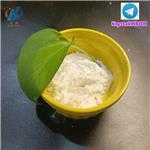
- $1.00 / 1KG
- 2024-04-23
- CAS:146-14-5
- Min. Order: 1KG
- Purity: 99.91%
- Supply Ability: 200000
- FLAVIN ADENINE DINUCLEOTIDE
-
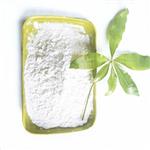
- $100.00 / 25kg
- 2023-01-31
- CAS:146-14-5
- Min. Order: 1kg
- Purity: 99%
- Supply Ability: 50000KG/month
- FLAVIN ADENINE DINUCLEOTIDE
-
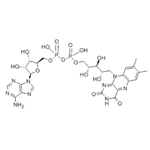
- $0.00 / 1kg
- 2022-10-01
- CAS:146-14-5
- Min. Order: 1kg
- Purity: 98%
- Supply Ability: 1Ton




